Occupational Safety Training for Pressure Equipment Operation
99,000 ₫
Note: The above price is calculated for one person and may fluctuate depending on the number of course participants and market movements. For more accurate pricing support, please refer to the pricing table or contact our consulting staff directly.
Occupational safety is an important issue when operating pressure equipment and needs to be addressed promptly to ensure the health and safety of workers and enhance the reputation of businesses here. The Occupational Safety Training course is one of the effective solutions to raise awareness about accident prevention for workers operating pressure equipment.
Table of Contents
Toggle1. Overview of Pressure Equipment
a. What is Pressure Equipment?
Pressure equipment is a type of equipment designed to contain or generate high or low pressure in industrial processes. These pressure devices can include various types, such as tanks, pipes, valves, combustion chambers, boilers, containers, and many other machinery and mechanisms capable of producing pressure.
Pressure equipment is commonly used in many industries, such as chemical, oil and gas, electronics, energy, and food production. They are used to carry out processes such as distillation, chemical reactions, cooking, cooling, or heat conversion.
Due to their nature, pressure equipment must be designed, manufactured, and operated safely to prevent dangerous accidents, such as explosions, leaks, or other incidents that could harm people and the environment. Therefore, many countries have strict regulations and standards regarding the design, inspection, and maintenance of pressure equipment to ensure safety.

b. Applications of Pressure Equipment in Production
Pressure equipment has many important applications in production processes across various industries. Below are some common applications of pressure equipment in production:
- Chemical Production: Pressure equipment is used for synthesis, distillation, and chemical processing. This includes boilers, chemical tanks, combustion chambers, and pressure pipelines.
- Oil and Gas Production: Pressure devices such as storage tanks, absorption columns, and pressure pipelines are used to hold and process oil and gas during extraction and production.
- Food and Beverage Production: Tanks, heating systems, and high-pressure processing equipment are used for manufacturing and preserving food and beverages.
- Electric Power: Pressure equipment, such as boilers and combustion chambers, is used to produce electric power, including thermal and renewable energy.
- Pulp and Paper Production: Pulp and paper production processes use various pressure equipment, including water pipelines and chemical processing equipment.
- Metal Production: In metal industries, pressure equipment like furnaces and rolling machines is used to process and manufacture metals.
- Pharmaceutical Production: Pharmaceutical processes often use pressure equipment for synthesis, mixing, and distillation of pharmaceutical components.
- Rubber and Plastic Production: Pressure equipment is used in rubber and plastic production processes to produce final products.
- Electronics Production: Electronics manufacturing processes often use pressure equipment to produce components and electronic devices.

c. Industries Using Pressure Equipment
Pressure equipment is widely used across many manufacturing sectors. Here are some main industries that use pressure equipment:
- Chemical Industry: Chemical companies use pressure equipment for synthesis, processing, and storage of chemicals.
- Oil and Gas Industry: Pressure equipment is used in extraction, production, and processing of oil and gas.
- Food and Beverage Industry: Tanks, heating systems, and high-pressure processing equipment are used for food and beverage production.
- Energy Industry: Boilers, combustion chambers, and other pressure equipment are used to generate electricity, including thermal and renewable energy.
- Pulp and Paper Industry: Paper and pulp production uses various pressure equipment like water pipelines and chemical processing devices.
- Metal Industry: Pressure equipment such as furnaces and rolling machines are used to process and manufacture metals.
- Pharmaceutical Industry: Pharmaceutical production often uses pressure equipment for synthesis, mixing, and distillation.
- Rubber and Plastic Industry: Pressure equipment is used to produce final rubber and plastic products.
- Electronics Industry: Electronics manufacturing processes use pressure equipment to produce components and devices.
- Wood and Furniture Industry: Pressure devices may be used in wood and furniture manufacturing for processing and treating wood.
2. Overview of Safety Training for Pressure Equipment Operation
a. What is Labor Safety Training?
- Labor safety training for operating pressure equipment consists of sessions that provide awareness on preventing workplace accidents. Workers who directly operate pressure equipment belong to group 3.
- Safety training helps workers identify and avoid hazards, reducing risks of workplace accidents during work.
REGISTER FOR LABOR SAFETY TRAINING SERVICE
b. Training Duration
Initial Safety Training Duration
- Total training time is at least 24 hours, including testing time.
- 8 hours of theory on safety and labor hygiene policies and laws
- 8 hours of theory on basic knowledge of labor safety and hygiene
- 4 hours of theory on specialized training content
- 2 hours of practical training on specialized content
- 2 hours of theoretical test at the end of the course
The training center will divide the schedule into multiple sessions depending on workers’ availability. Usually, there are 6 training sessions over 3 days, provided the company can arrange continuous learning time.
Periodic Safety Training Duration
- Before the labor safety card expires, workers who want to renew it must undergo a periodic labor safety training, with training time of at least 50% of the initial safety training duration.
Explanation: total periodic labor safety training time is at least 12 hours, including testing time. Upon completing the course and passing the test, workers will be reissued and renewed with a labor safety card.
c. Training Content
| No. | TRAINING CONTENT | TRAINING DURATION (HOURS) | |||
| Total | Including | ||||
| Theory | Practical | Test | |||
| I | System of safety and labor hygiene policies and laws | 8 | 8 | 0 | 0 |
| 1 | Overview of legal documents on labor safety and hygiene. | 6 | 6 | ||
| 2 | System of safety and labor hygiene standards and technical regulations. | 1 | 1 | ||
| 3 | Specific regulations of state management agencies on safety and labor hygiene when building, expanding, or renovating facilities to produce, use, store, and inspect machinery, equipment, materials, and substances with strict safety and labor hygiene requirements. | 1 | 1 | ||
| II | Basic knowledge of labor safety and hygiene | 8 | 8 | 0 | 0 |
| 1 | Basic knowledge of hazardous and harmful factors at the workplace. | 4 | 4 | ||
| 2 | Methods to improve working conditions. | 1 | 1 | ||
| 3 | Safety culture in production and business. | 1 | 1 | ||
| 4 | Rights and obligations of employers and workers; labor safety and hygiene policies for workers; roles and responsibilities of safety and hygiene network members. | 1 | 1 | ||
| 5 | Labor safety rules, signage, safety guidance, use of safety equipment and personal protective equipment; first aid skills, prevention of occupational diseases. | 1 | 1 | ||
| III | Specialized training content | 6 | 4 | 2 | 0 |
| Comprehensive knowledge of machinery, equipment, hazardous substances; analysis, risk assessment, and management for labor safety, safe work procedures with machinery, equipment, and substances with strict safety and hygiene requirements. | 6 | 4 | 2 | ||
| IV | Final safety training test at the end of the course | 2 | 2 | 0 | 0 |
| Total | 24 | 22 | 2 | ||
See more training content of 6 groups
d. Labor Safety Card
After completing the labor safety training and passing the test, workers will be issued a labor safety card (commonly called labor safety certificate group 3).
The group 3 safety card shows information such as name, date of birth, job and specific working environment, training duration, red stamp, and signature confirming course completion.
According to regulations on card issuance stated in Clause 2 Article 24 Decree 44/2016/ND-CP, there are 2 cases:
- If the employer and worker have a labor contract, the employer must sign, stamp, and seal the group 3 safety card after the worker completes the course from a labor safety training unit and passes the test.
- If the worker is freelance or temporary, without a labor contract, the training unit must sign, stamp, and seal the card after the worker completes the training and passes the test.

3. Hazards when operating pressure equipment
Operating pressure equipment can face many hazards if safety rules and periodic inspections are not followed. Below are some common hazards related to operating pressure equipment:
- Explosion or equipment destruction: Pressure equipment that is not properly constructed, inspected, and maintained may face risks of explosion or destruction. This can lead to serious injuries and environmental consequences.
- Leaks: Pressure equipment leaking gas, steam, or pressurized liquids can cause accidents, environmental pollution, or fire and explosion. Leaks can also result in product loss and waste of resources.
- Excessive temperature and pressure: If the pressure or temperature exceeds the safe limits of the equipment, explosions or other incidents may occur. This is especially true for boilers and pressure vessels.
- Chemical risks: In the chemical industry, incidents in operating pressure equipment can cause unwanted chemical reactions or the release of hazardous substances.
- Mechanical hazards: Pressure equipment may contain mechanical parts such as valves, combustion chambers, and actuators. If these parts fail or malfunction, accidents may occur.
- Toxic exposure risk: Hazardous substances may be used or produced in pressure equipment. Without proper safety measures, workers may be exposed to toxins.
- Working in hazardous environments: Work environments around pressure equipment may be exposed to heat radiation, sparks, or other physical and chemical hazards.
To cope with these hazards, managers and operators of pressure equipment need to comply with safety regulations, ensure periodic inspections and maintenance of equipment, provide safety training to staff, and follow specific operating instructions for each type of pressure equipment.

4. Measures to control occupational accidents when operating pressure equipment
Controlling occupational accidents when operating pressure equipment is an important part of occupational safety in many industries. Below are some key measures to reduce the risk of accidents when working with pressure equipment:
- Occupational safety training: Provide training and guidance for staff operating pressure equipment. Ensure they understand safe usage, know how to respond to dangerous situations, and know how to inspect and maintain equipment.
- Periodic inspection and maintenance: Conduct regular inspections and maintenance of pressure equipment to ensure proper operation and avoid malfunctions. Plan for replacement and repair when necessary.
- Compliance with standards and regulations: Ensure all pressure equipment meets local and national safety standards and regulations. Be familiar with requirements for inspection, certification, and reporting related to pressure equipment.
- Pressure and temperature control: Monitor pressure and temperature in equipment to ensure they do not exceed safe limits. Use accurate measuring devices and ensure periodic calibration.
- Liquid and chemical control: Ensure that the storage, transfer, and handling of liquids and chemicals in pressure equipment are safe. Use safety valves and outlets to control the flow of substances.
- Access control: Limit access to areas containing pressure equipment to trained and authorized personnel. Use safety measures such as fences and signs to protect these areas.
- Safe design: Design pressure equipment with safety features, including protective mechanisms, safety valves, and safe dismantling methods when necessary.
- Risk identification and assessment: Conduct risk analysis to identify potential hazards and assess their severity. Apply appropriate control measures based on results.
- Regular inspection: Perform regular inspections on pressure equipment to detect potential problems early and ensure safety.
- Emergency planning: Prepare and practice for emergencies such as leaks, fires, or other incidents. Ensure staff know how to respond and use safety equipment like protective clothing.
- Reporting and learning from incidents: Any incident or accident should be reported and investigated carefully to identify causes and apply preventive measures.
- Safety mindset: Promote a safety mindset at all organizational levels, from management to on-site staff. Encourage everyone to manage and protect themselves and colleagues from accident risks.
- Periodic inspection of pressure equipment to detect safety issues such as wear or mechanical failure, thereby reducing the risk of occupational accidents.
5. Benefits of occupational safety training
An Toan Nam Viet provides your business with the following benefits after completing occupational safety training courses in accordance with Decree 44/2016/ND-CP on Occupational Safety and Hygiene for companies, factories, and enterprises.
- Employees can identify potential occupational hazards and take preventive measures to avoid accidents.
- Your business can establish risk prevention measures in production, operation, and maintenance processes.
- Reduce costs associated with unsafe working conditions.
- Continuous production increases labor productivity and product quality.
- Compliance with labor safety laws, avoiding legal risks.
- Enhance reputation and professionalism, improving your brand value.
Nam Viet’s training courses are a solution to prevent and counter external hazards affecting individuals, helping them avoid injuries or, in severe cases, death.
REGISTER FOR OCCUPATIONAL SAFETY TRAINING SERVICE
6. Customer feedback after completing training
An Toan Nam Viet has many years of experience accompanying businesses across Vietnam, particularly in the southern provinces. This responsibility is extremely valuable, which is why An Toan Nam Viet’s Occupational Safety Training is continuously professional. Our growth is fueled by positive feedback and constructive suggestions from partner businesses. Below are testimonials from clients we have served.
See more customer interviews after using An Toan Nam Viet services
7. An Toan Nam Viet Occupational Safety Training Competence
An Toan Nam Viet is a reputable and high-quality occupational safety training center in Vietnam. Training sessions are continuously conducted at factories, plants, and construction sites across all 63 provinces in Vietnam.
REGISTER FOR OCCUPATIONAL SAFETY TRAINING SERVICE
Occupational safety training license
- An Toan Nam Viet has been certified by the Department of Safety under the Ministry of Labor, Invalids, and Social Affairs to operate occupational safety training. This strengthens our training capability.

Materials and lectures
- Before being used in occupational safety training courses, all materials are reviewed to ensure accurate knowledge and effectiveness.
- Teaching methods are standardized according to An Toan Nam Viet standards, developed by experts in occupational safety training to maximize knowledge absorption.
Facilities
- Controlling classroom factors affecting training improves teaching performance and knowledge retention.
- Our training facilities provide spacious classrooms meeting standards for space, lighting, and training equipment.
8. Nationwide reputable occupational safety training center
At An Toan Nam Viet, we prioritize professional dedication in occupational safety training. Teaching workers to protect themselves equips them with safety skills for their livelihood, contributing to national development.
To ensure effective training, we carefully prepare every detail, from tools and teaching devices to manuals, documents, audio, and lighting.
Our trainers are experts with years of experience and research in identifying hazards across industries and teaching prevention methods.
Lectures are practical and presented vividly for easy understanding by workers, ensuring comfort and knowledge retention, while adhering strictly to Decree 44/2016/ND-CP.
Employees learn preventive measures and self-protection methods, applying them appropriately in their work.
Our training center is proud to provide professional occupational safety training with the following advantages:
- Competitive training costs while maintaining high quality.
- Flexible training schedules according to company production needs.
- Fast and compliant certification procedures.
- Experienced trainers.
- Controlled classrooms improving teaching efficiency and knowledge absorption.
- Lectures tailored to enterprise occupational safety needs.
- Dedicated and professional support for clients quickly and accurately.

9. Additional occupational safety training materials
- Safety training materials for pressure equipment operation
- Occupational safety training materials set
- Occupational safety training tests
10. Occupational safety training activities
- ECONUTI FOOD JOINT STOCK COMPANY
- TESTING, CERTIFICATION AND QUALITY SERVICE CENTER
- KHANG GIA TRADING & MANUFACTURING CO., LTD
- MINH HAI GARMENT EXPORT CO., LTD
- HOGETSU VIETNAM CO., LTD
- VRG- DAK NONG JOINT STOCK COMPANY
1 review for Occupational Safety Training for Pressure Equipment Operation
No comments yet

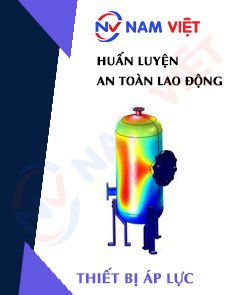
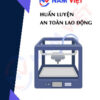
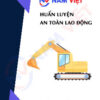



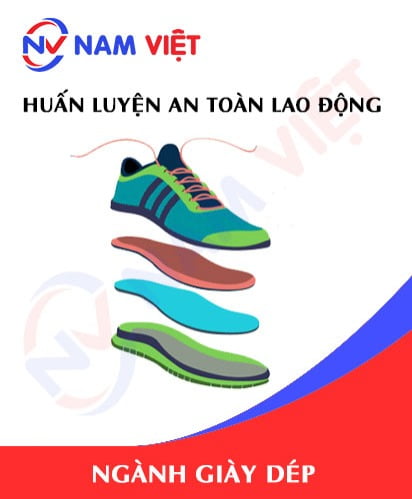

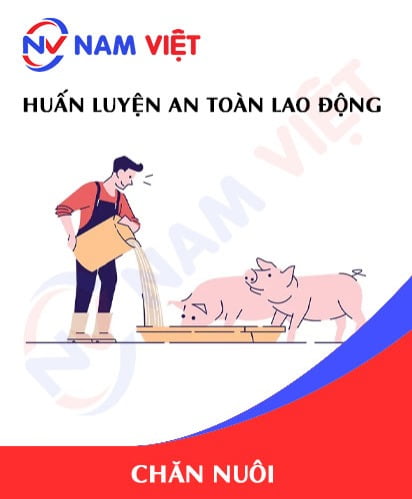
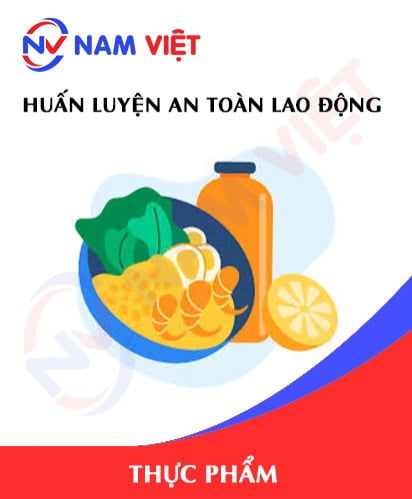
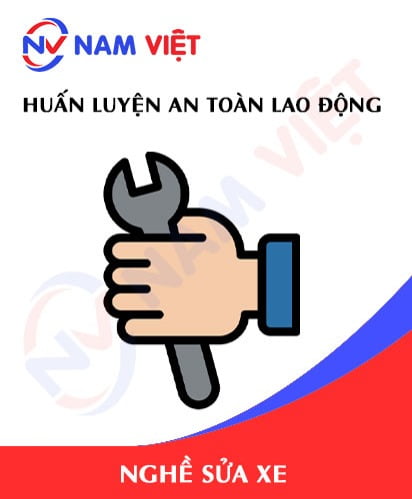

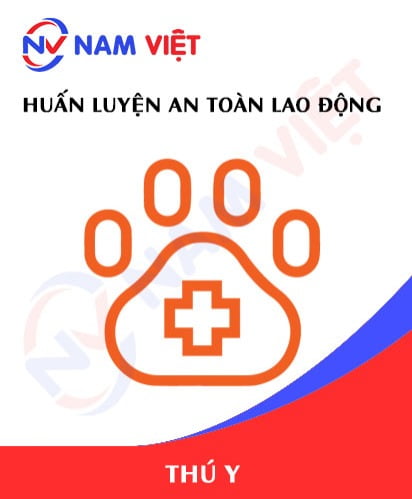

phanminhhang341
The lecturer teaches very lively and easy to understand!